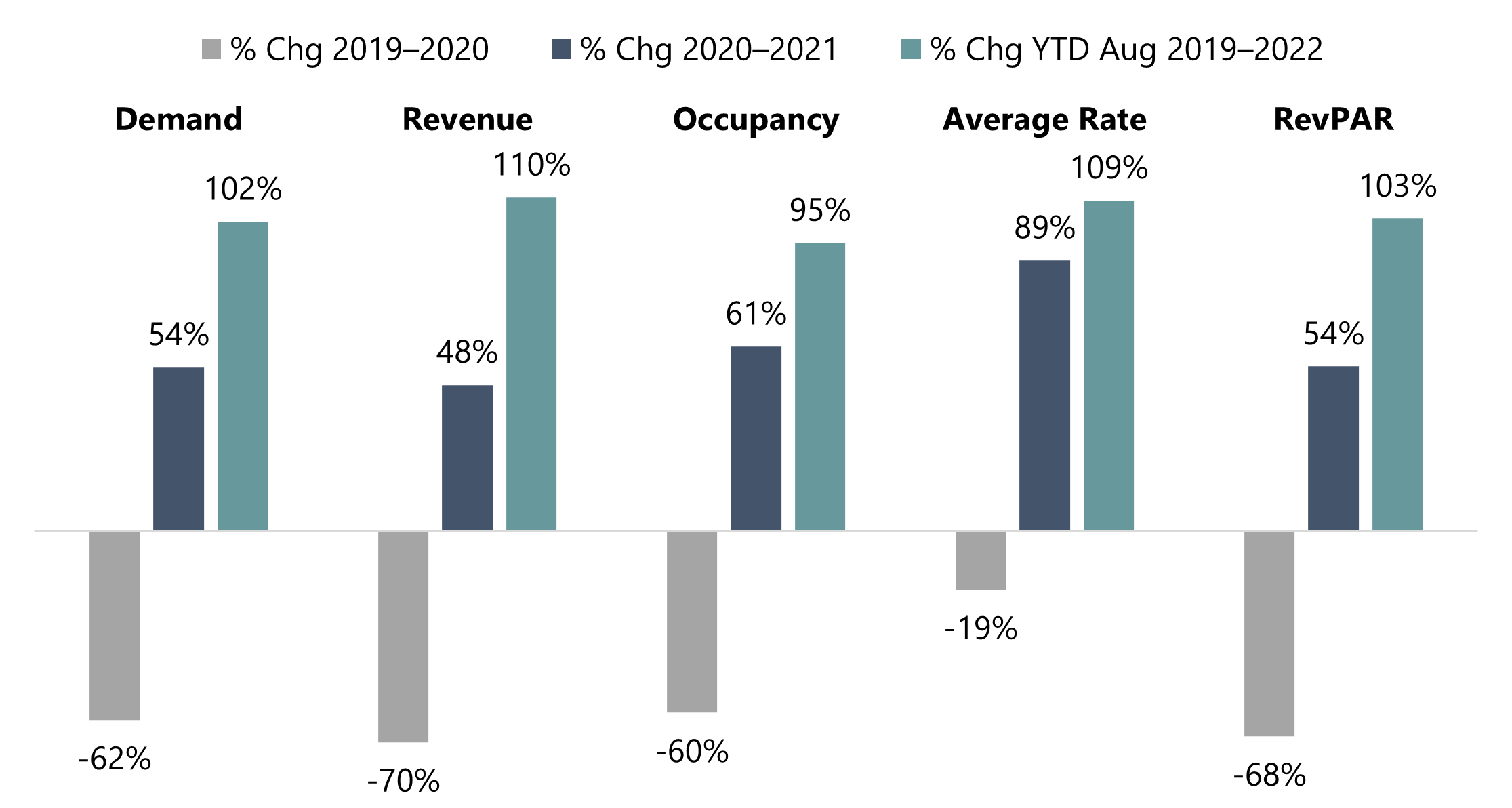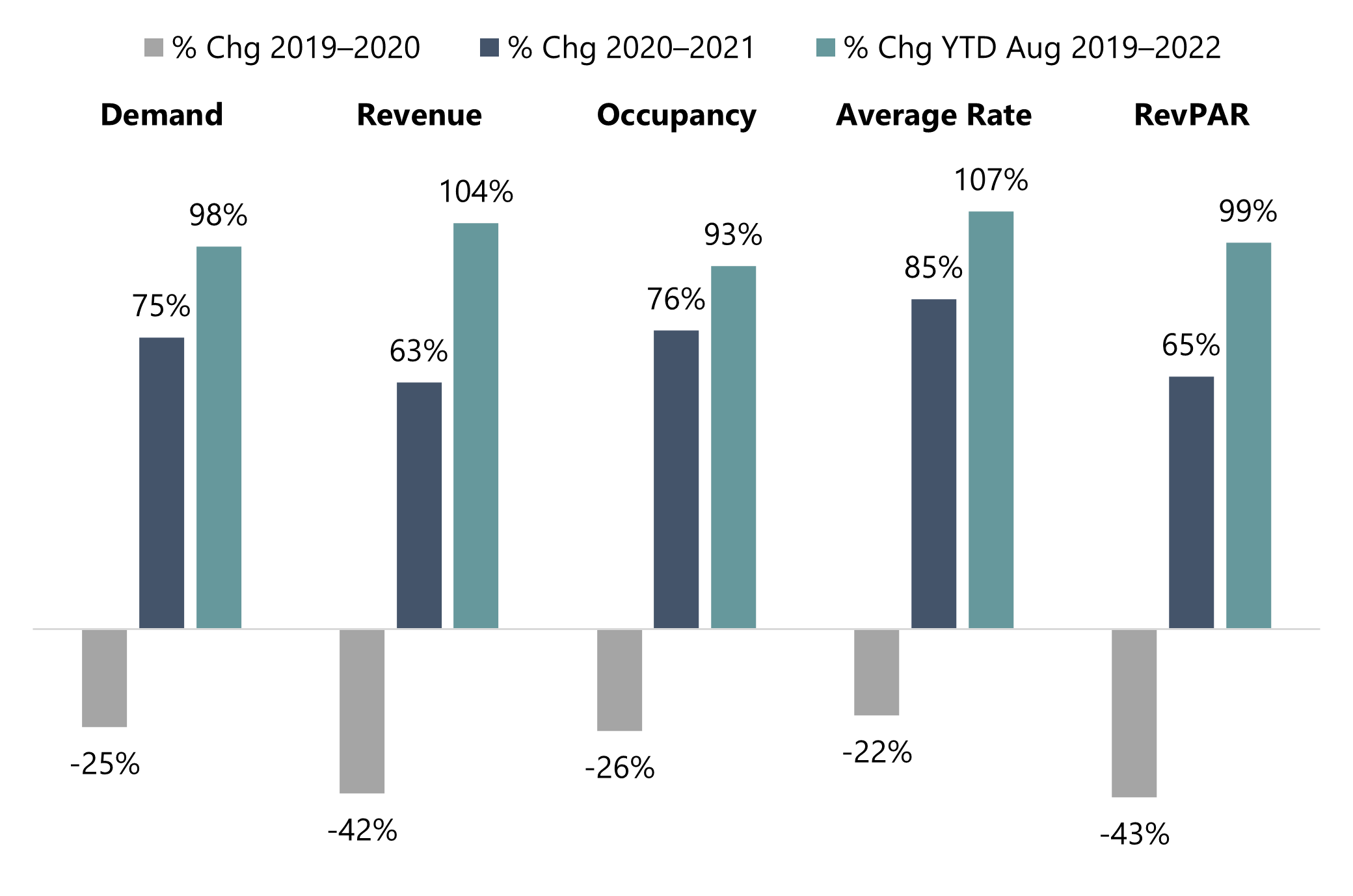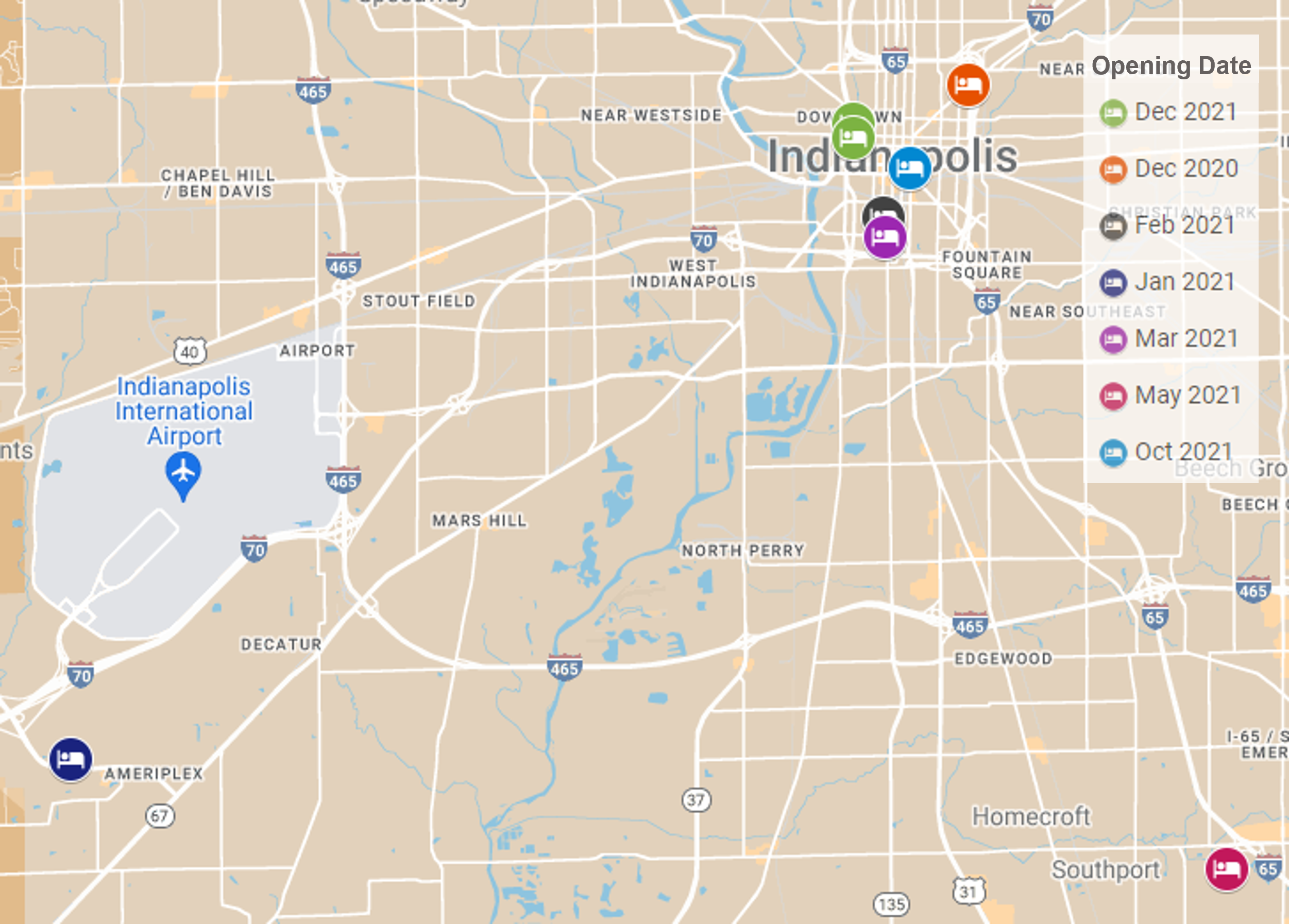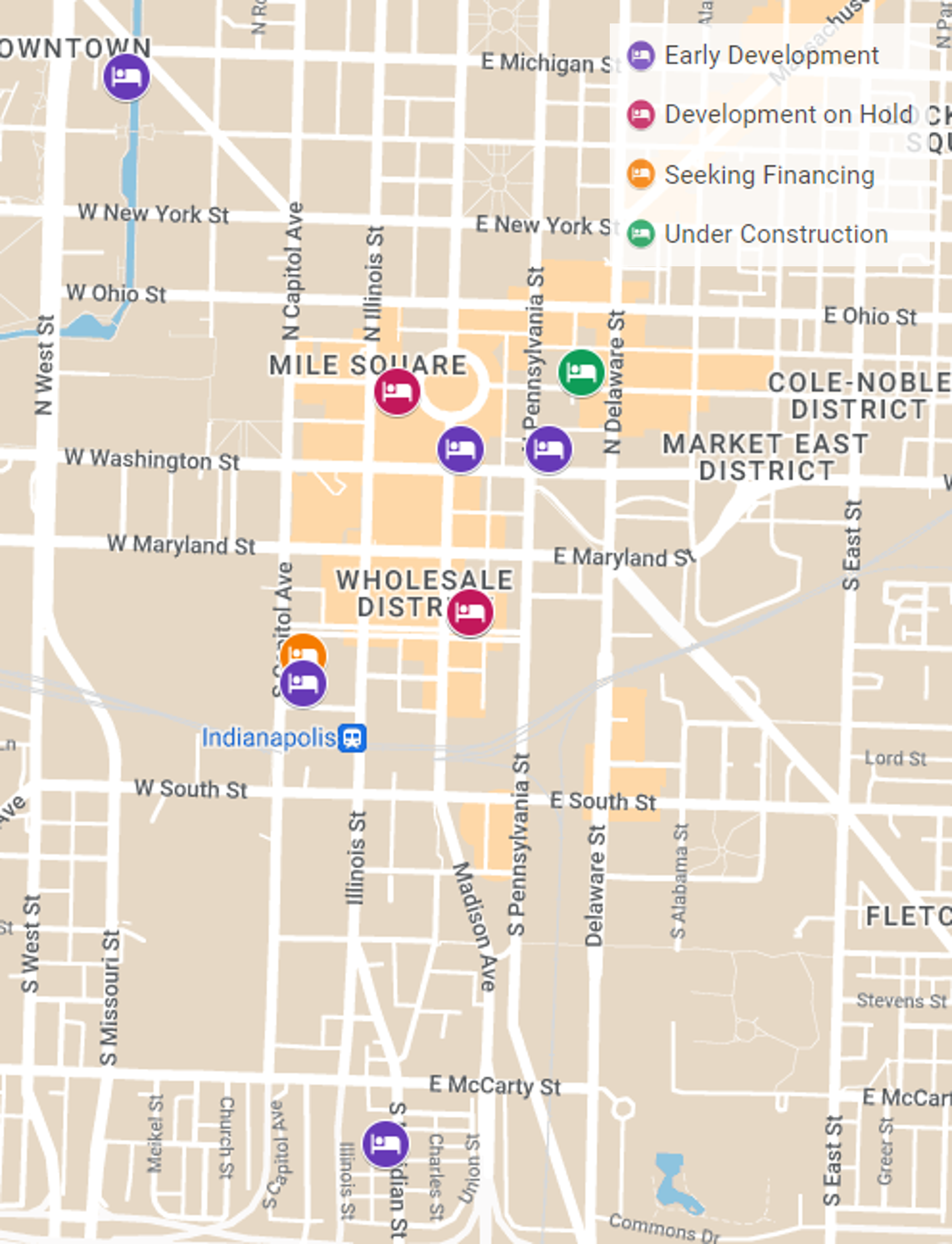By Brian Arevalo
Following a record-breaking year in 2019, the hospitality sector in Indianapolis experienced a devasting blow in 2020 because of the COVID-19 pandemic. Downtown Indianapolis was particularly hard hit due to its heavy reliance on citywide conventions, sporting events, and other events to fill hotel rooms. However, as restrictions were lifted and leisure travel, in particular, began to rebound, the market saw improvement in 2021. While occupancy levels remained well below 2019 levels, average rate increased significantly, resulting in healthy RevPAR growth. This rate growth was driven largely by the opening of the Bottleworks Hotel in late 2020 and the Hotel Indy, a Tribute Portfolio Hotel in October 2021.
The tables below illustrate the changes in lodging metrics for the Downtown Indianapolis and Non-Downtown/Marion County markets since 2019.
Source: Visit Indy
Changes in Non-Downtown/Marion County Metrics
Source: Visit Indy
Indianapolis is on track for an even stronger recovery in 2022, bolstered by strong leisure demand and increased meeting and group demand. Some events that have generated significant room nights this year include the Indianapolis 500, NCAA March Madness, and the 2022 College Football National Championship game. Most notably, the Indianapolis 500 was held without capacity limitations for the first time since 2019. More than 325,000 people attended the race, making it the highest-attended single-day sporting event in the world since the beginning of the COVID-19 pandemic.
Increasing demand levels should help the market absorb the new supply that was introduced throughout 2021, and this new supply should also help hoteliers continue to push rate growth. The following map shows the new supply that has opened since December 2020.
The supply pipeline has slowed, with no new projects expected to open in 2022; however, several notable projects are either already under construction or expected to break ground in the near future, including the 800-room Signia by Hilton hotel, which is being developed by Kite Realty Group in conjunction with the expansion of the Indianapolis Convention Center. According to Inside Indiana Business, Kite is expected to complete all pre-construction and financing work by the end of this year. The hotel and convention center addition should open in early 2026; a later phase is anticipated to include a 600-room Hilton-branded hotel adjacent to the Signia. Multiple major conventions, including the American Dental Association and GenCon, have committed to the city, contingent upon the completion of the expansion and opening of the Signia.
The following map shows the proposed new supply in various stages of development.
Other projects under development that will further drive increases in demand are listed as follows.
Bicentennial Unity Plaza
$30 million – Estimated Opening 2023
Bicentennial Unity Plaza will feature a community basketball court that will be converted seasonally to an ice rink, community-based public programming, and new public art thanks to a $28.47-million grant from Lilly Endowment Inc.
Fall Creek Pavilion
Eleven Park
City Market East Project
The historic City Market will be redeveloped with an improved parking garage and the conversion of alleyways into walking trails. A new 10,500-square-foot glass enclosure of the City Market building will offer more event and entrepreneurial space.
Despite the severe effects of the pandemic on Indianapolis’s hospitality industry, the city’s position as a premier convention and sports/entertainment destination has enabled it to recover well. The continued strength and expansion of the regional economy should allow the Indianapolis hospitality industry to prosper and grow over the long term.
For more detailed forecasts or to inquire about a specific hotel project, contact Brian Arevalo.
Jane Rogers contributed to this article.





